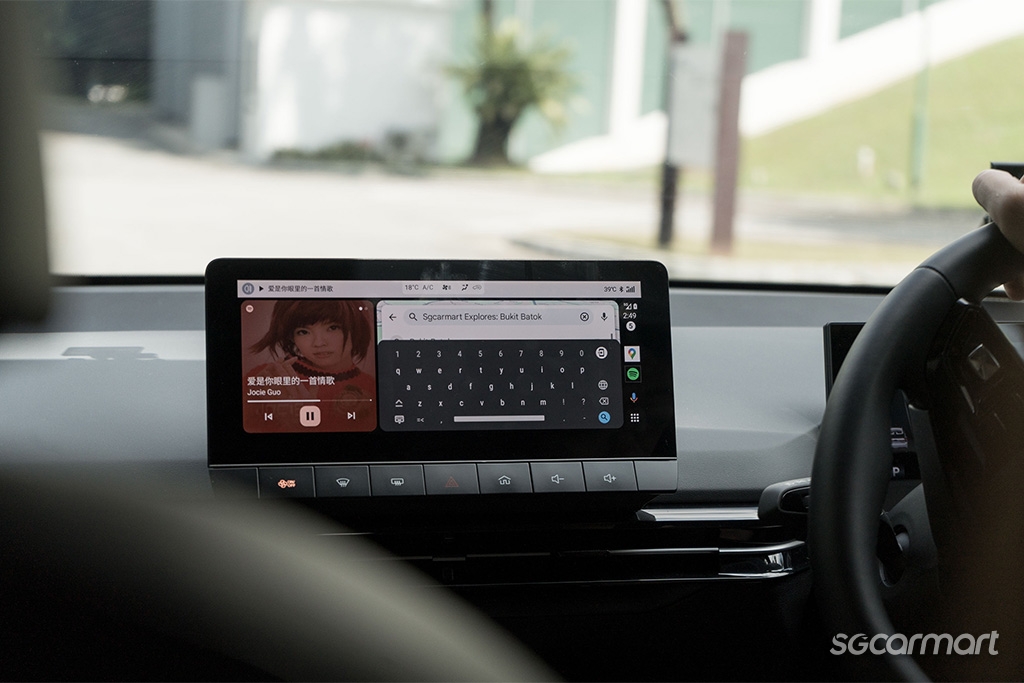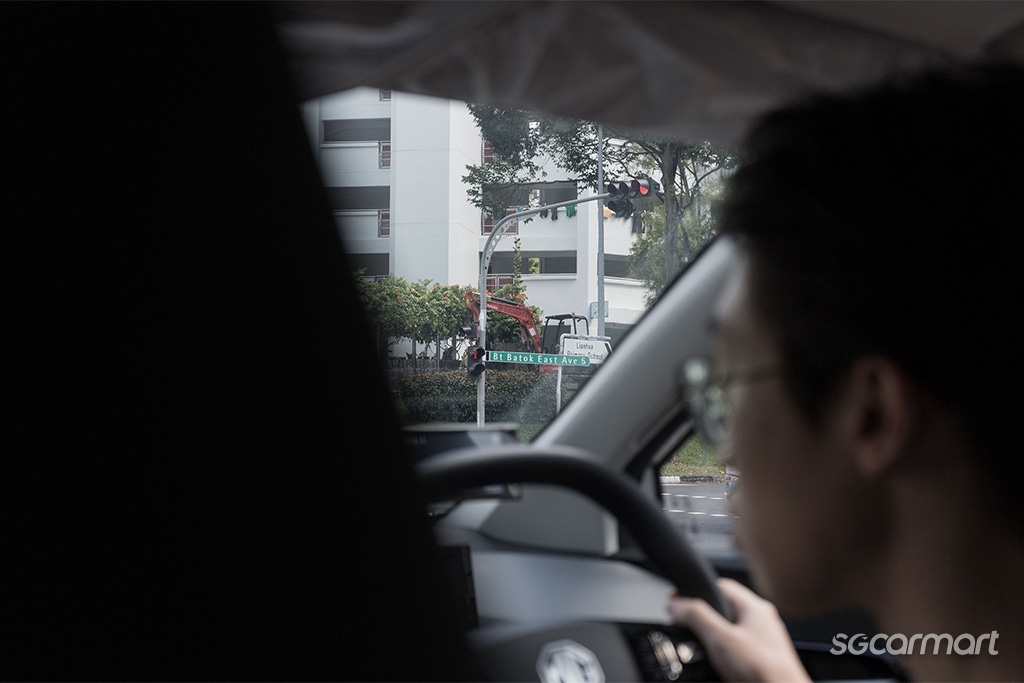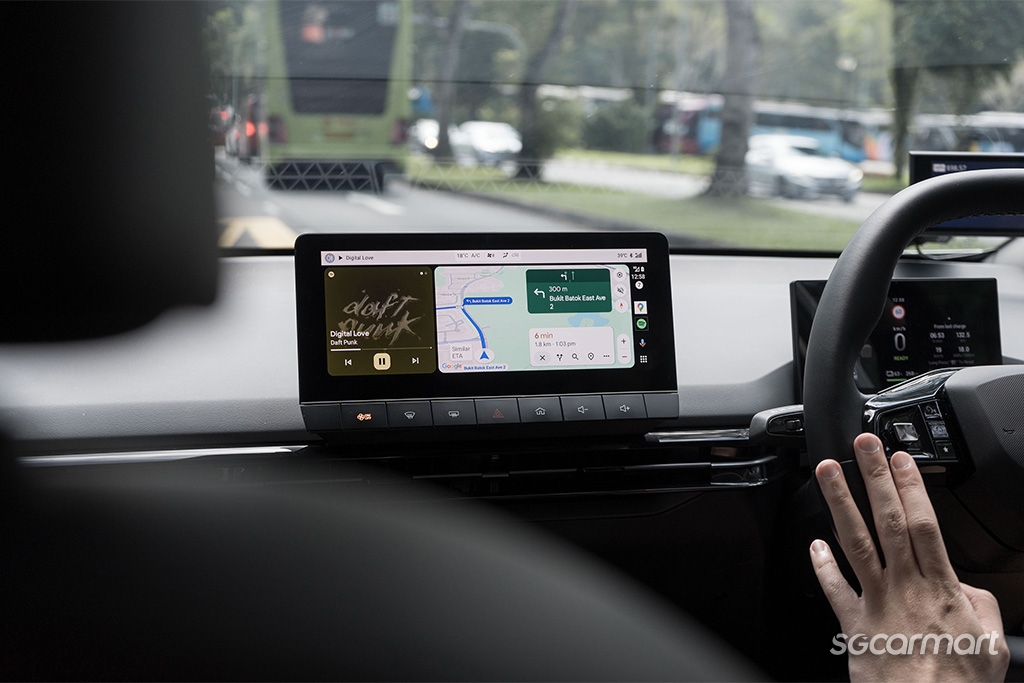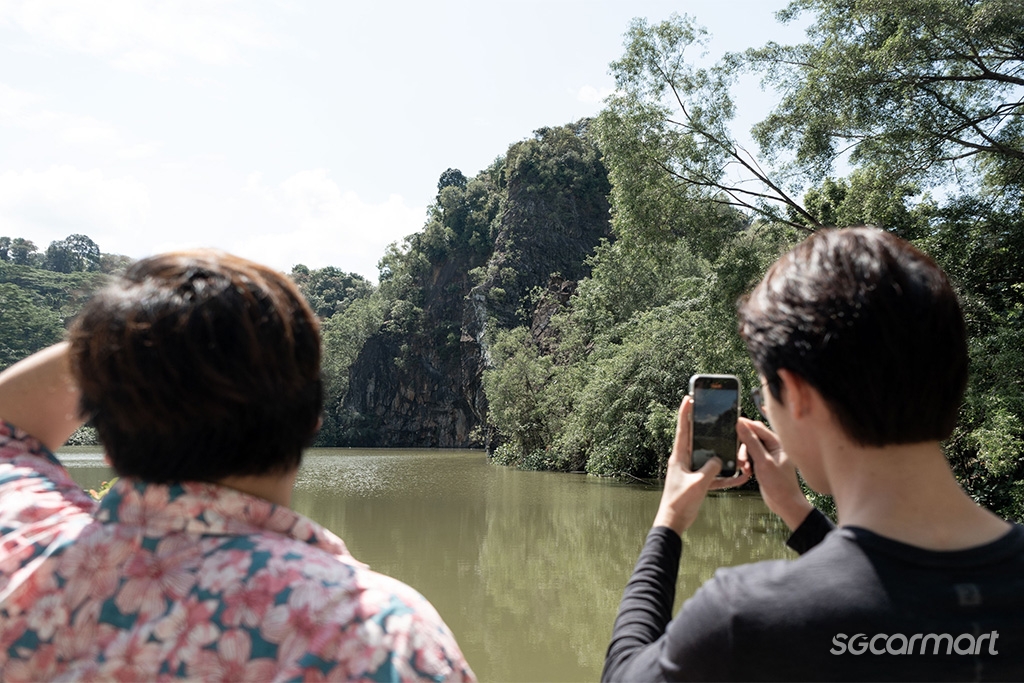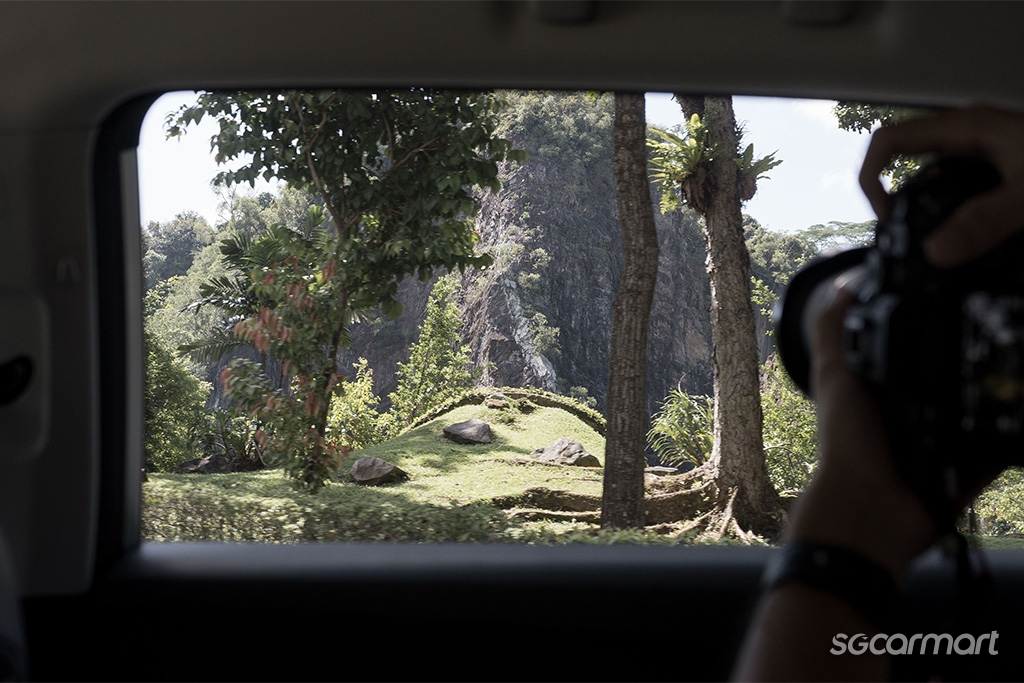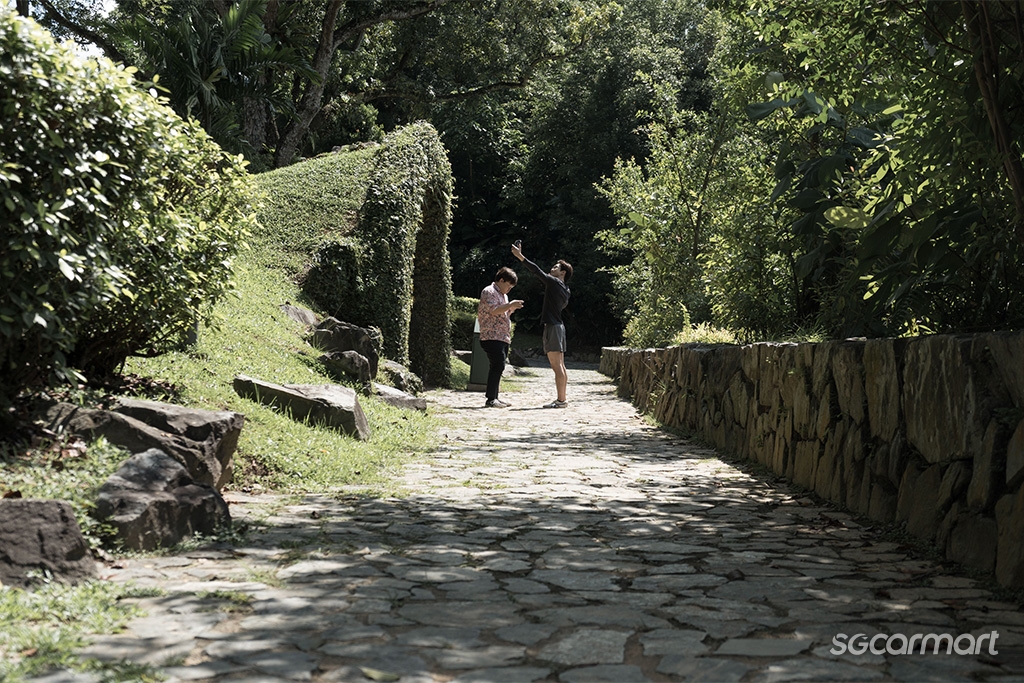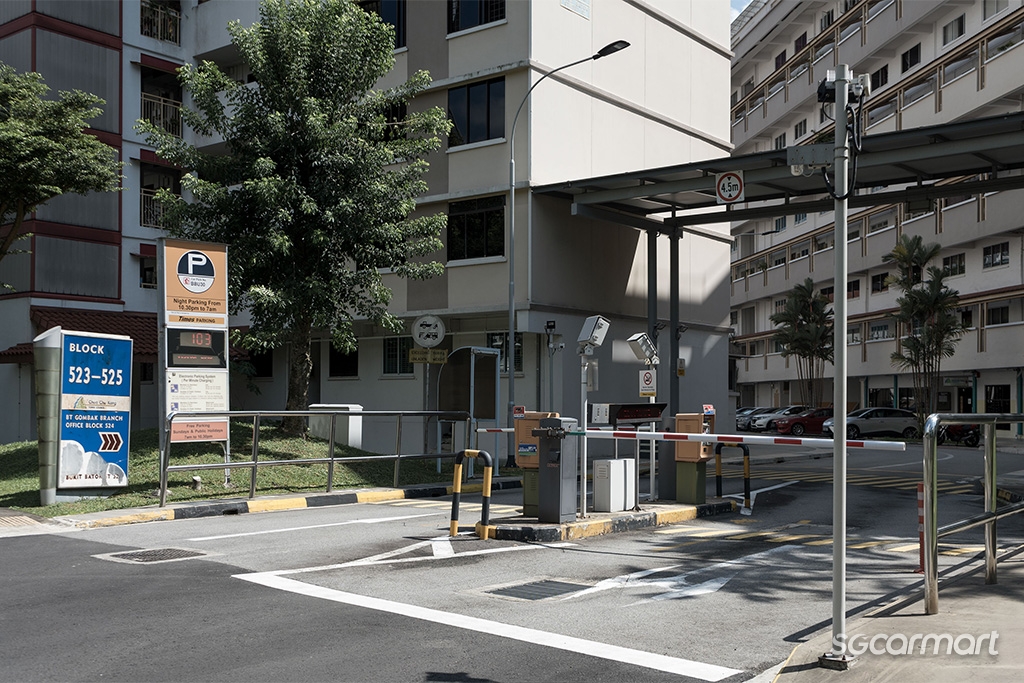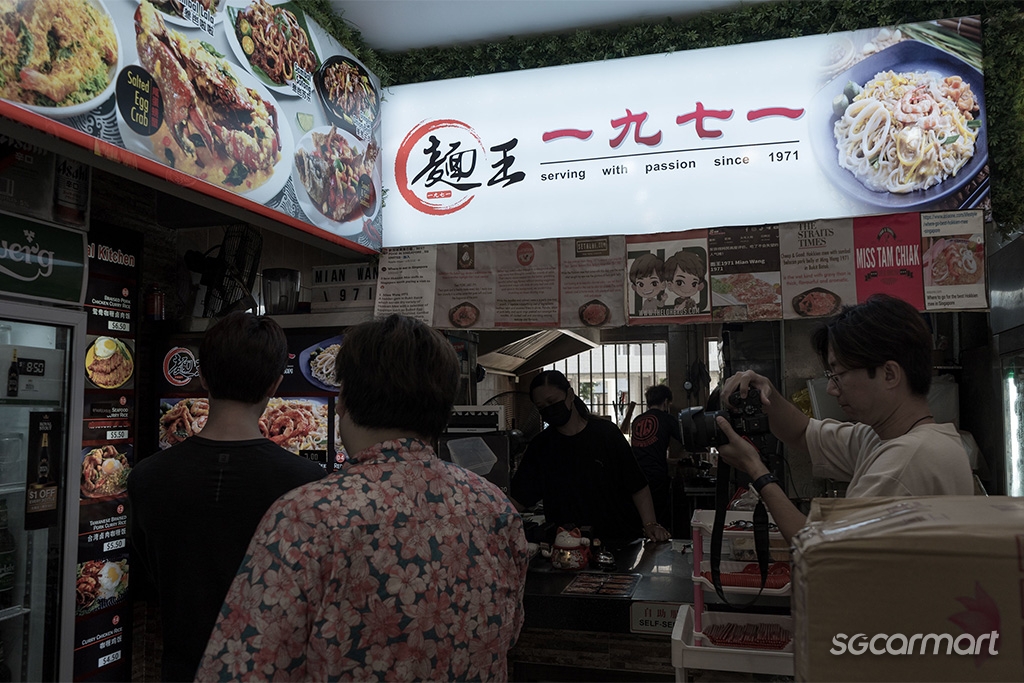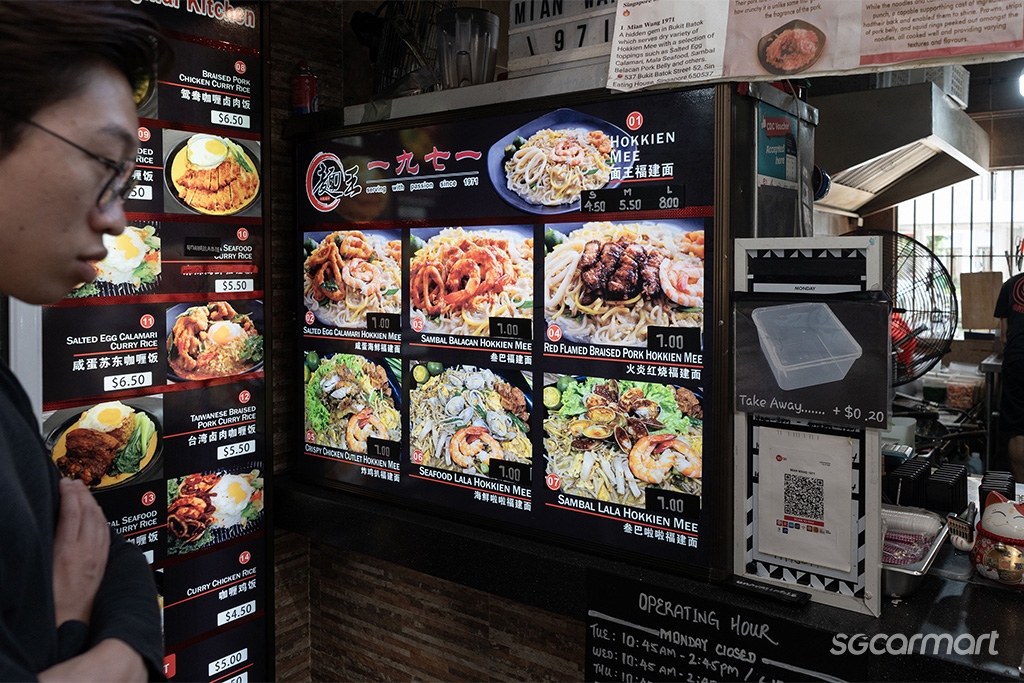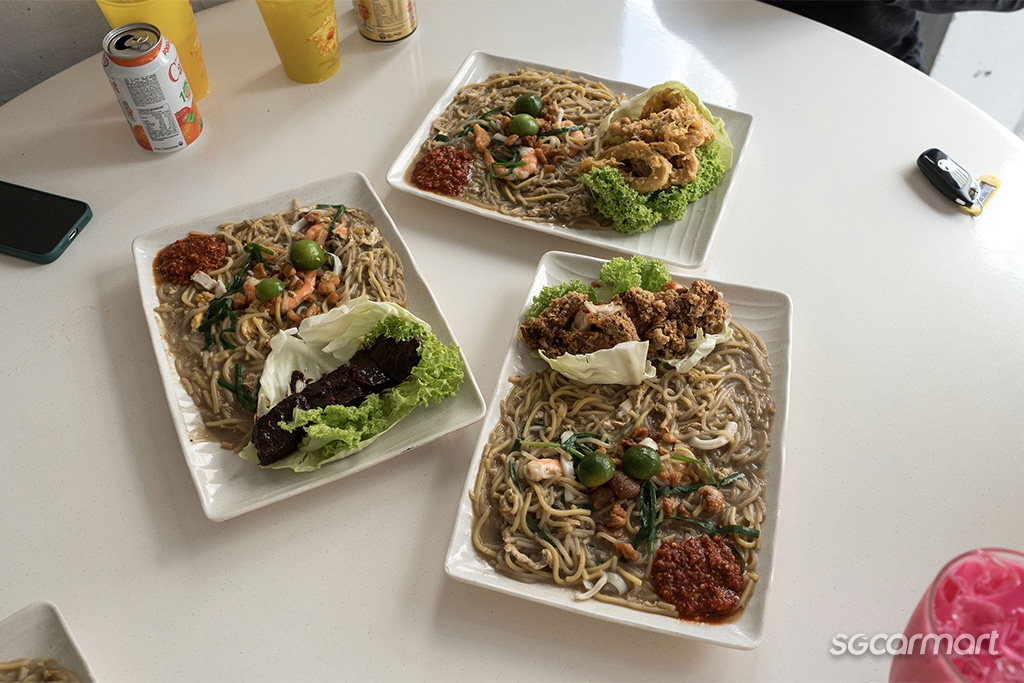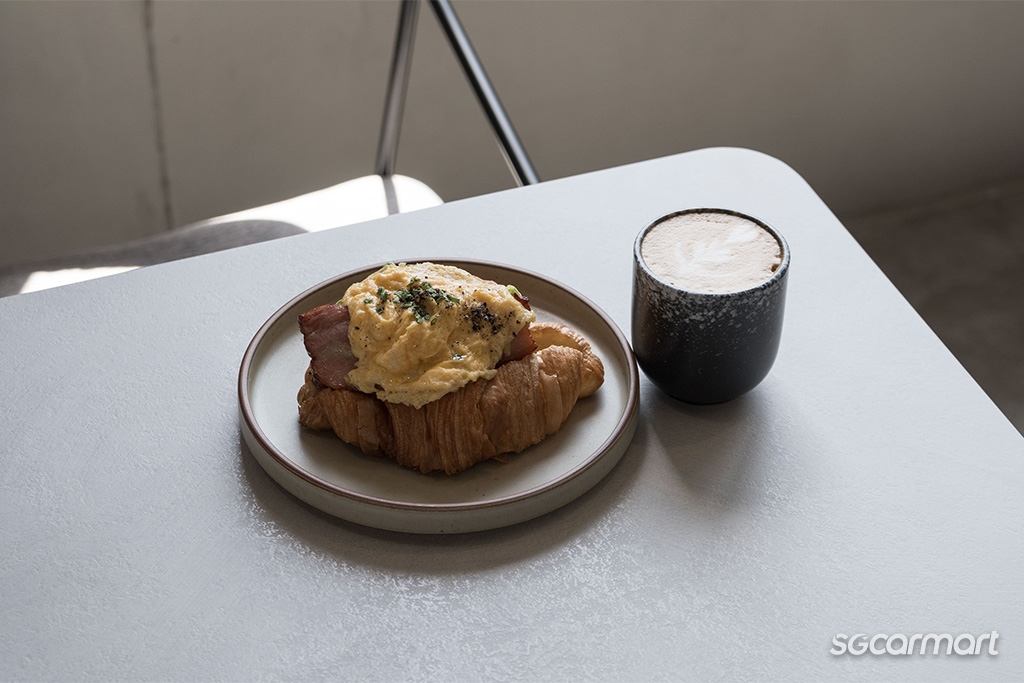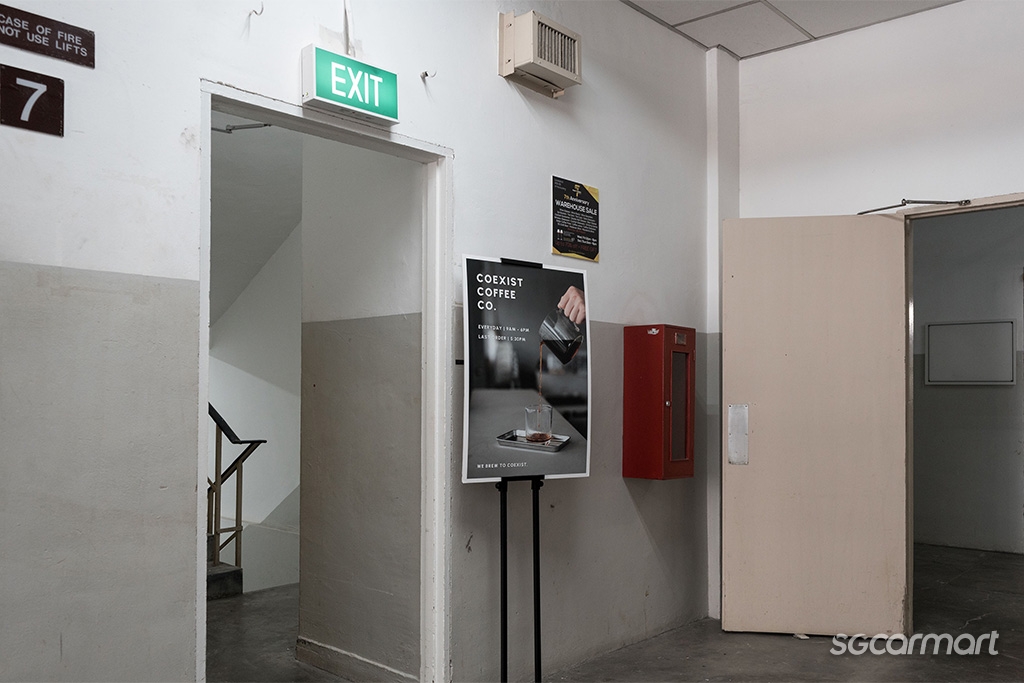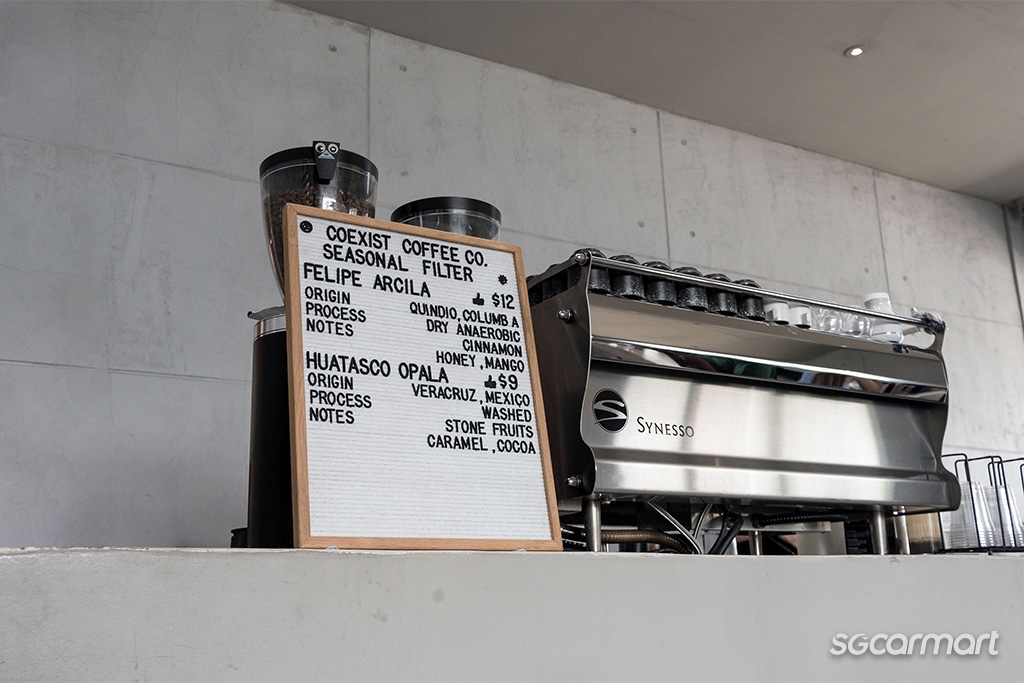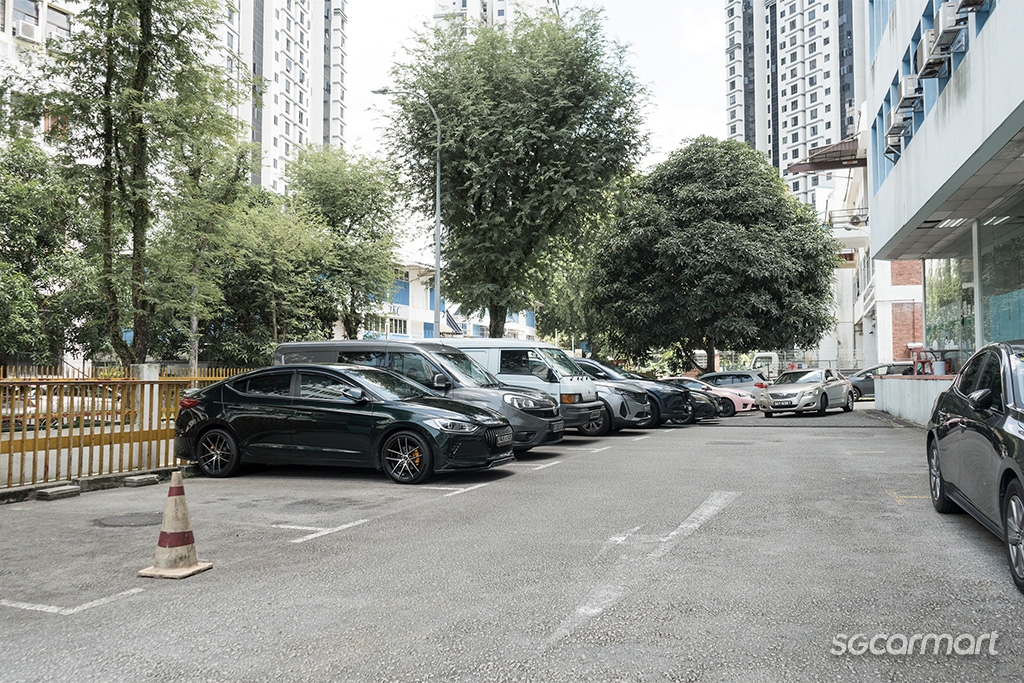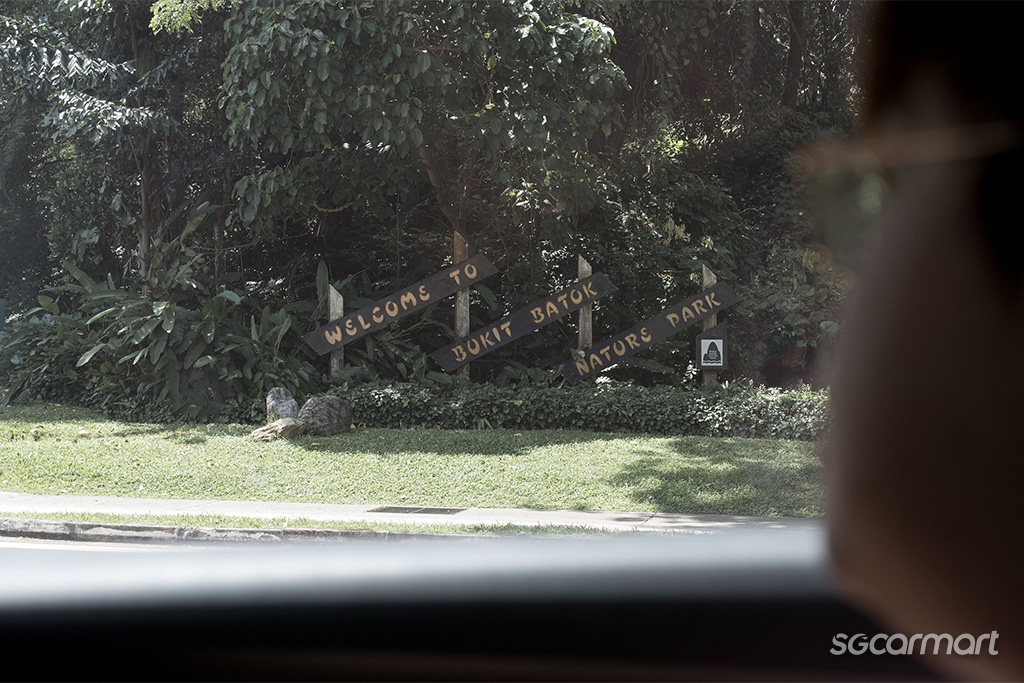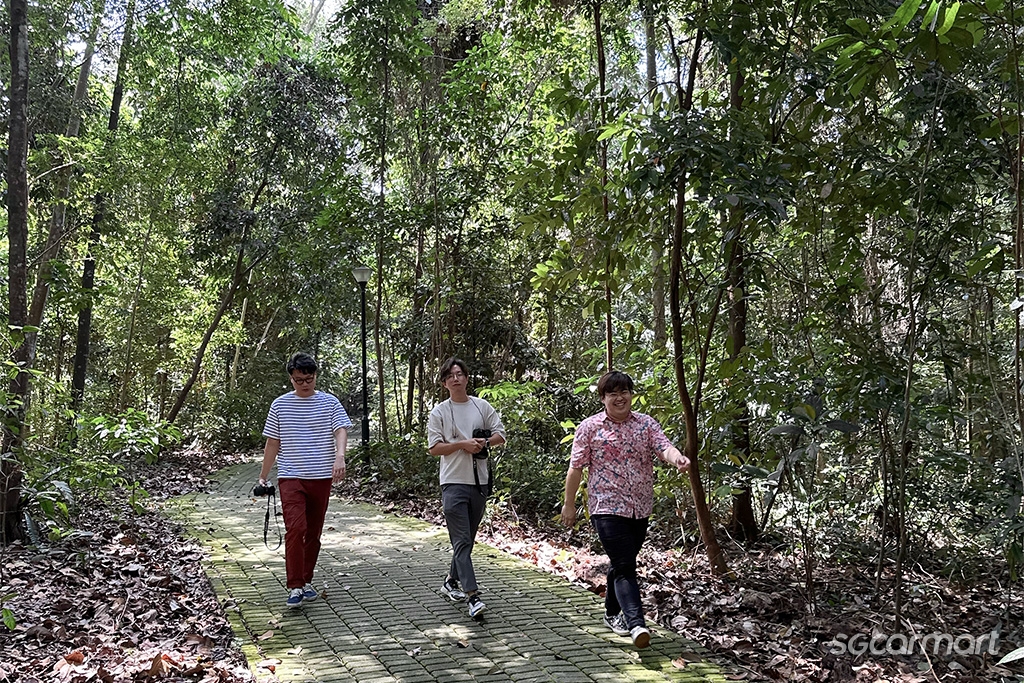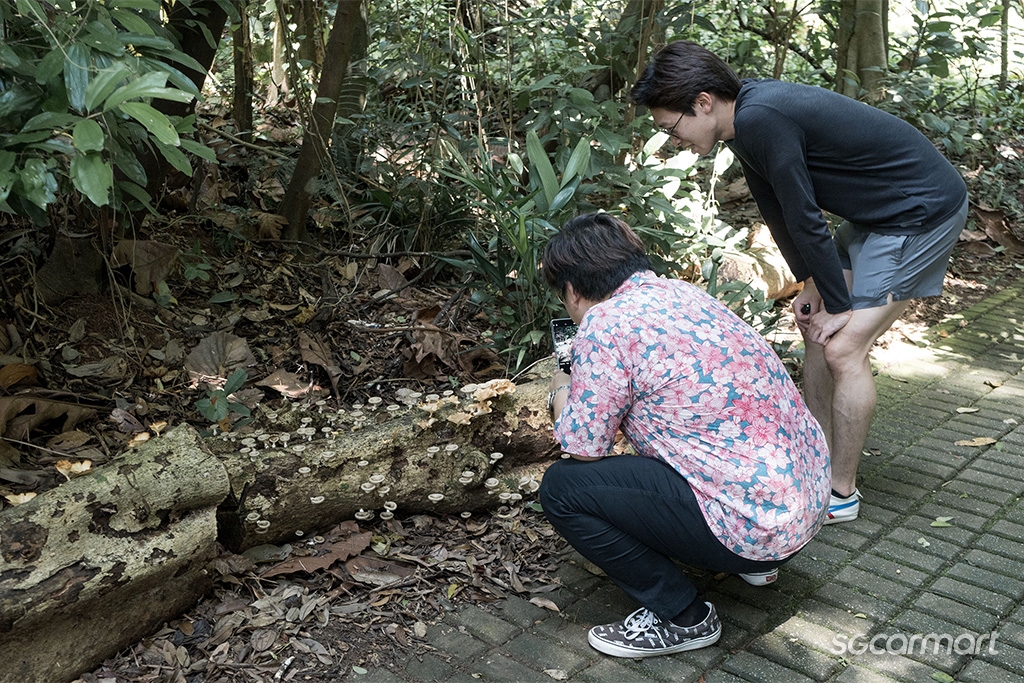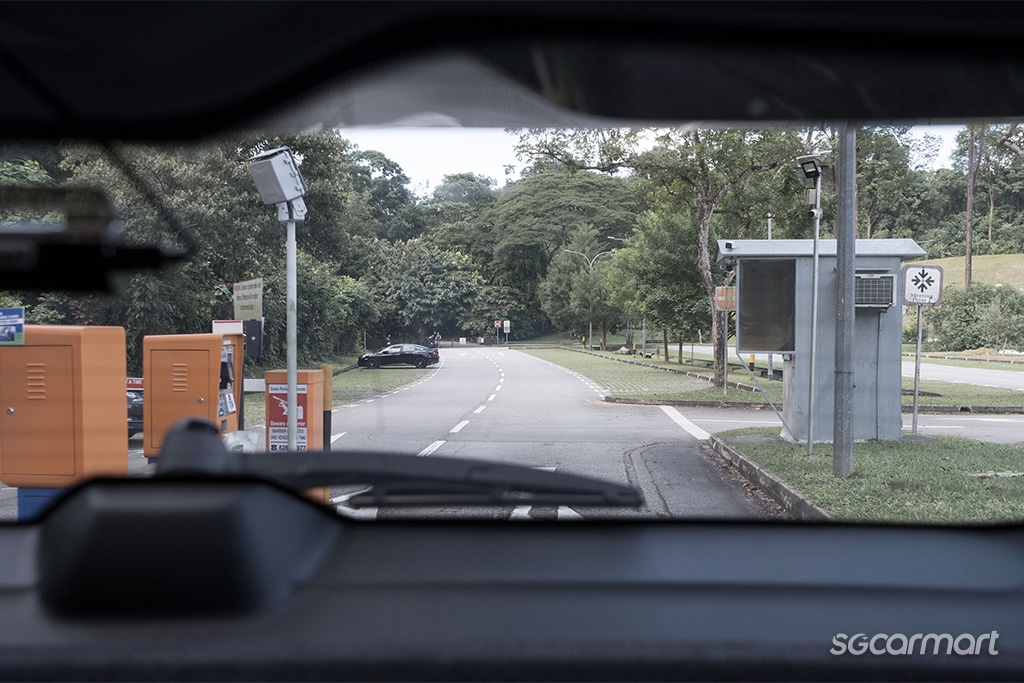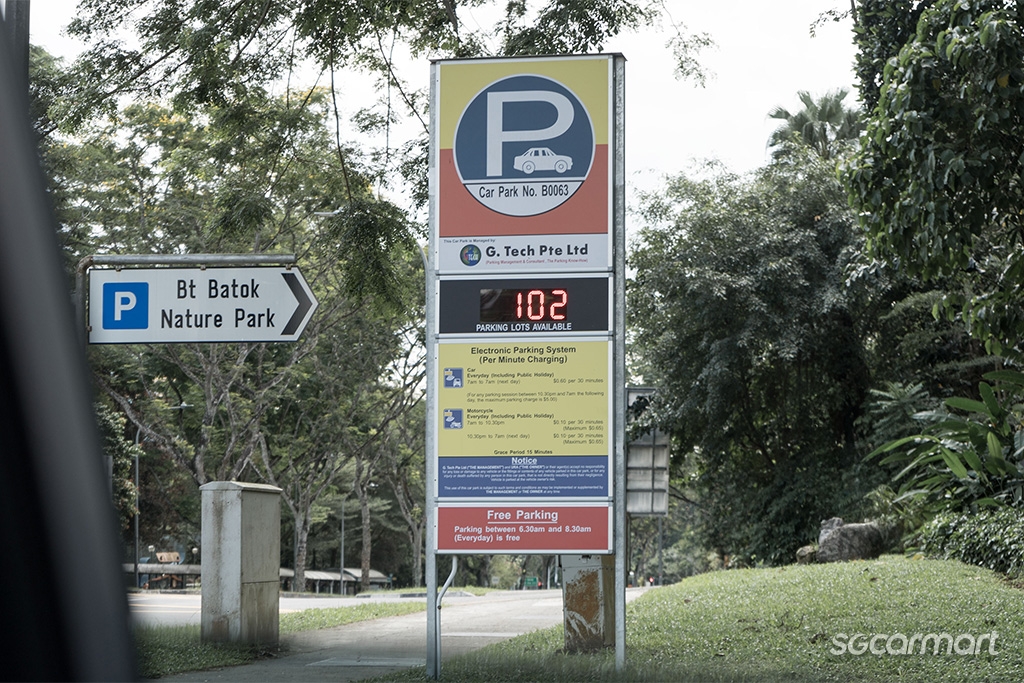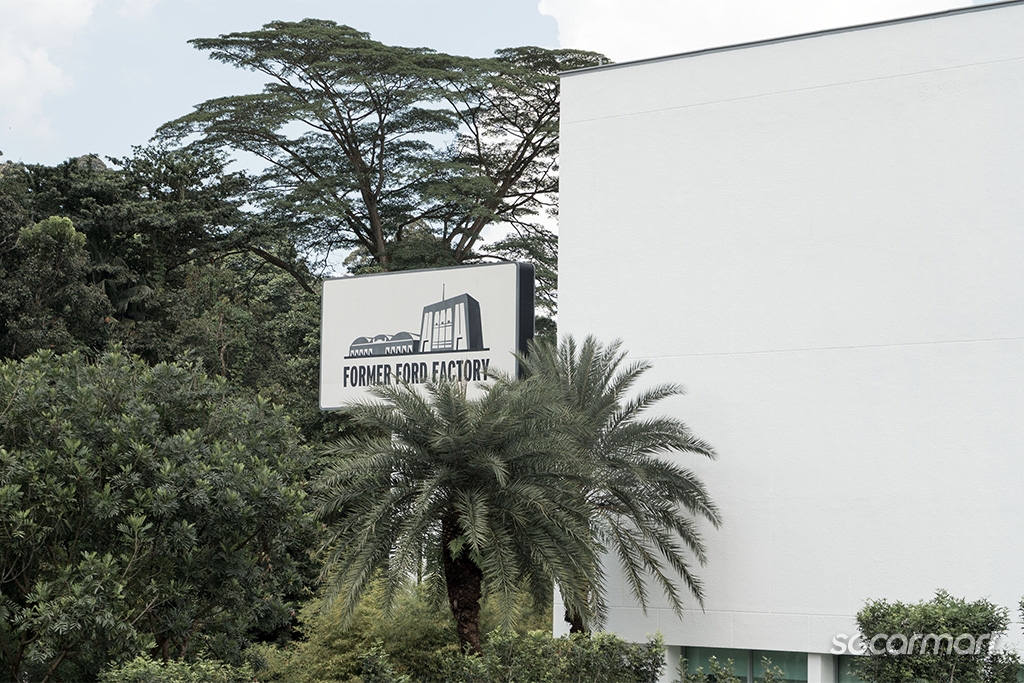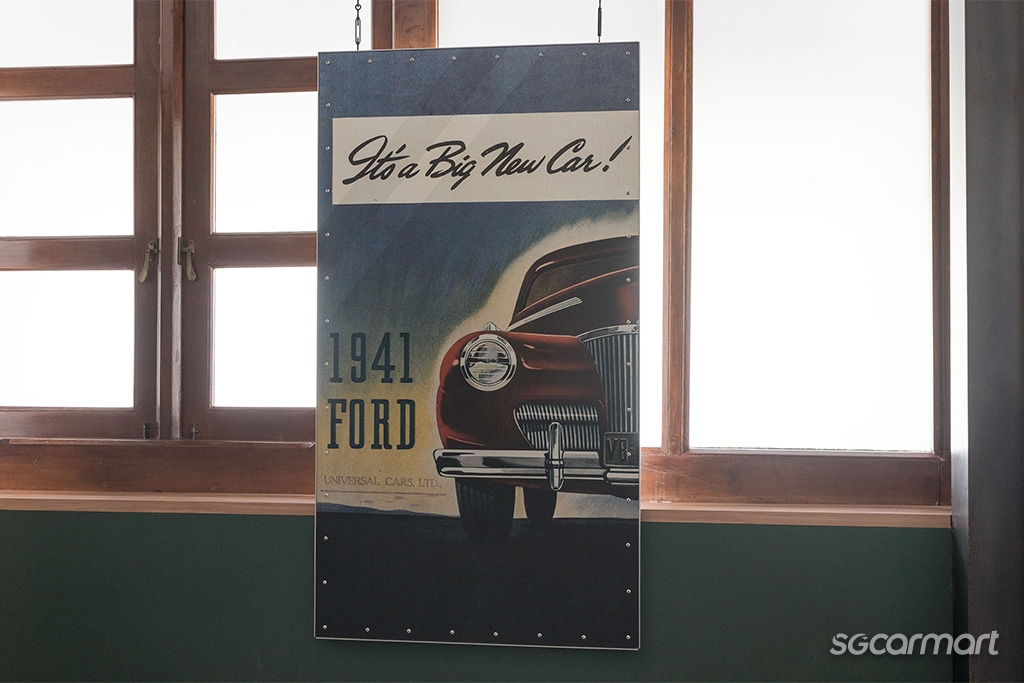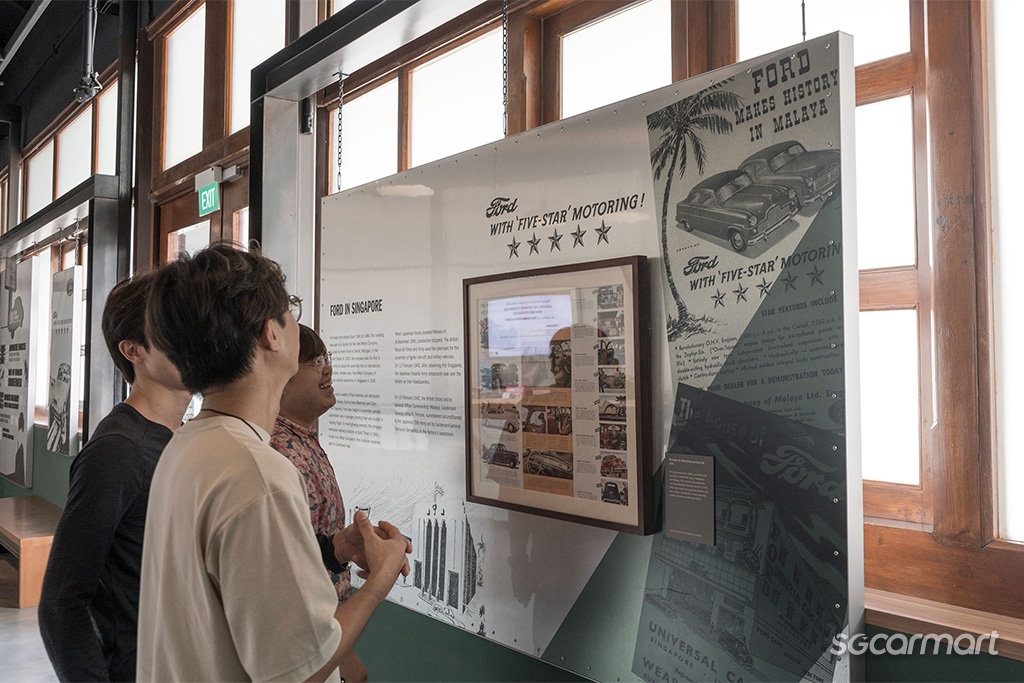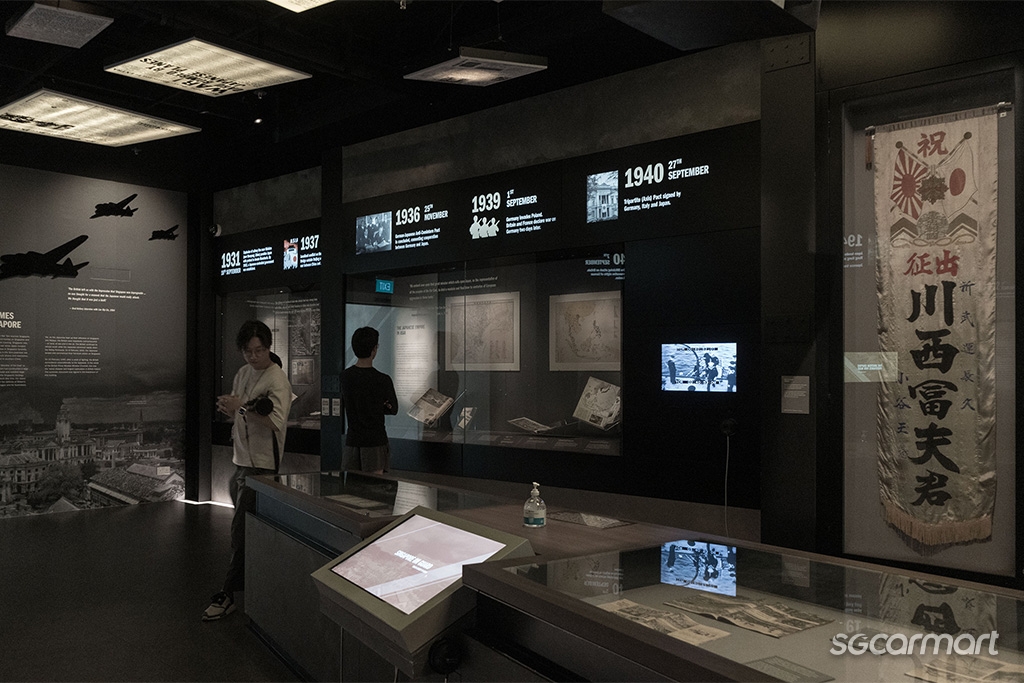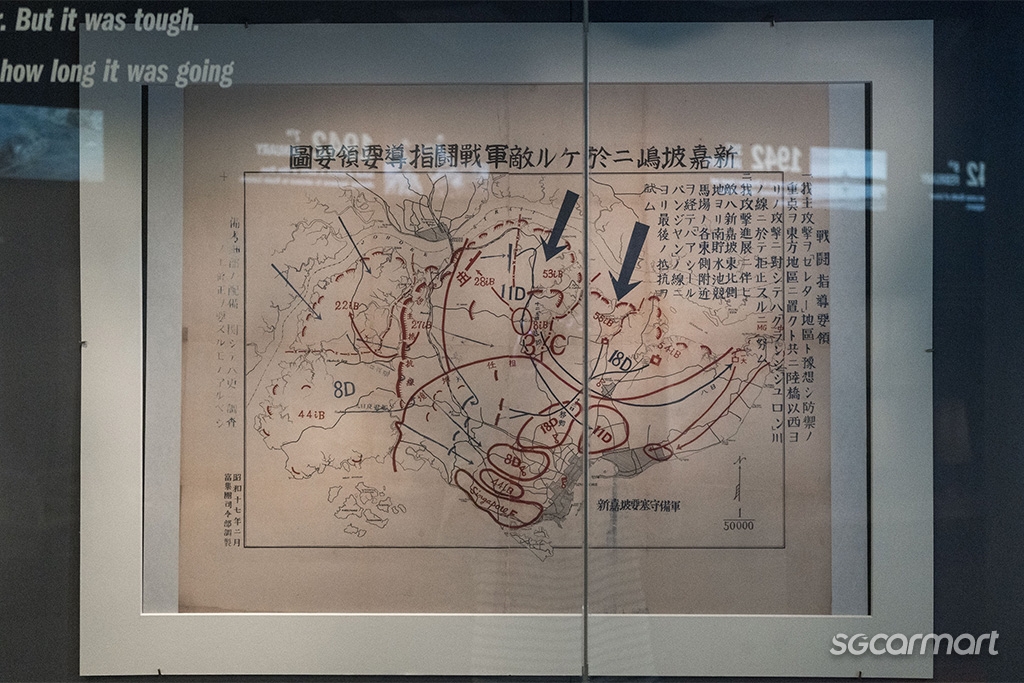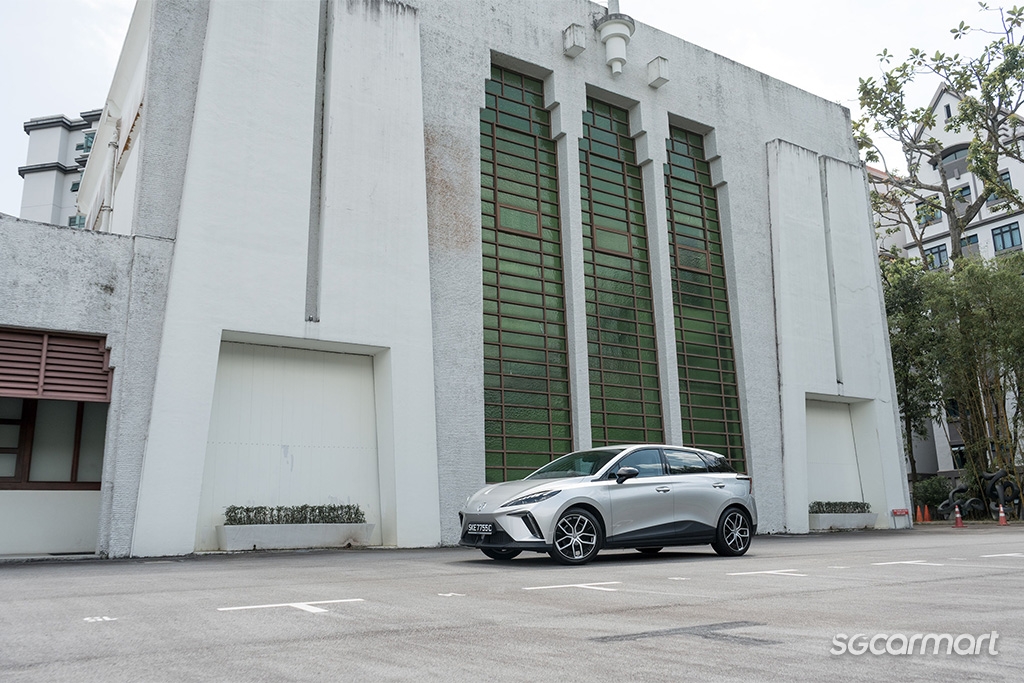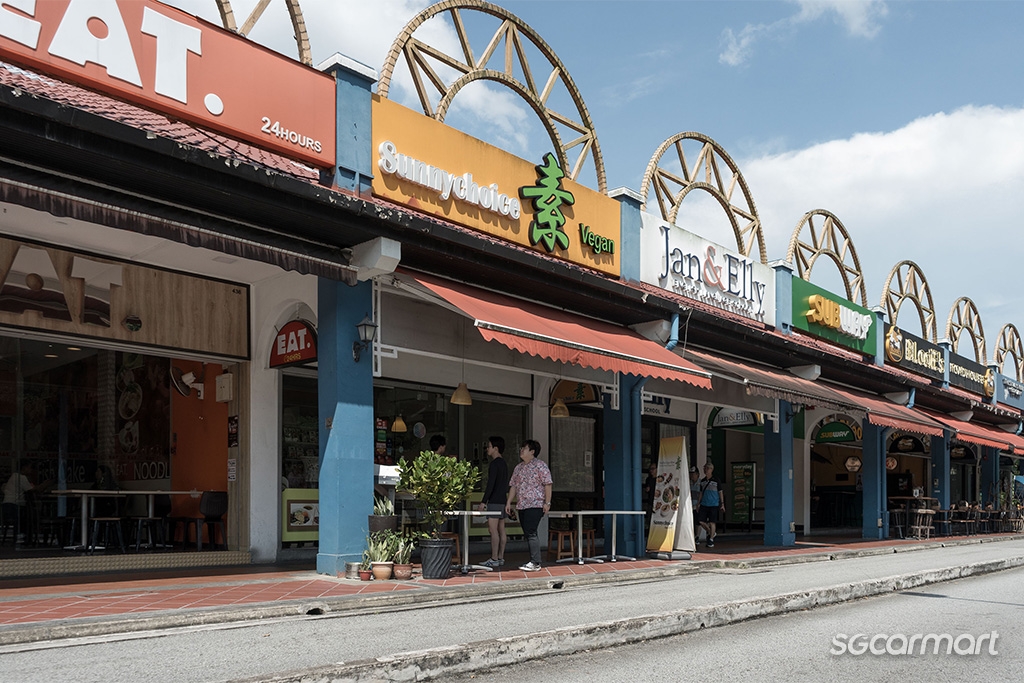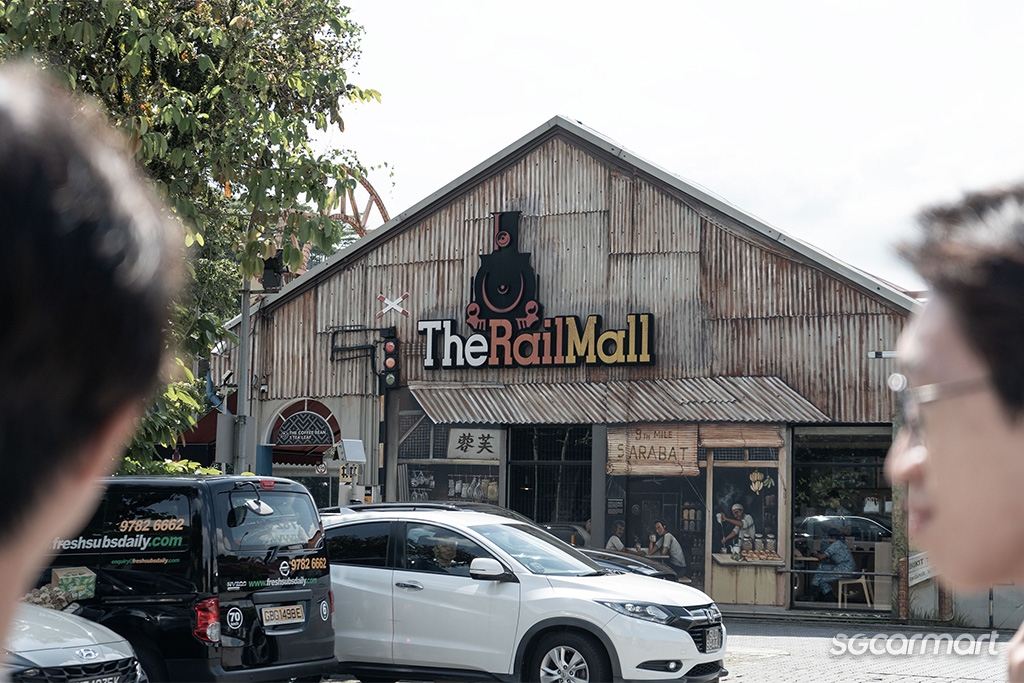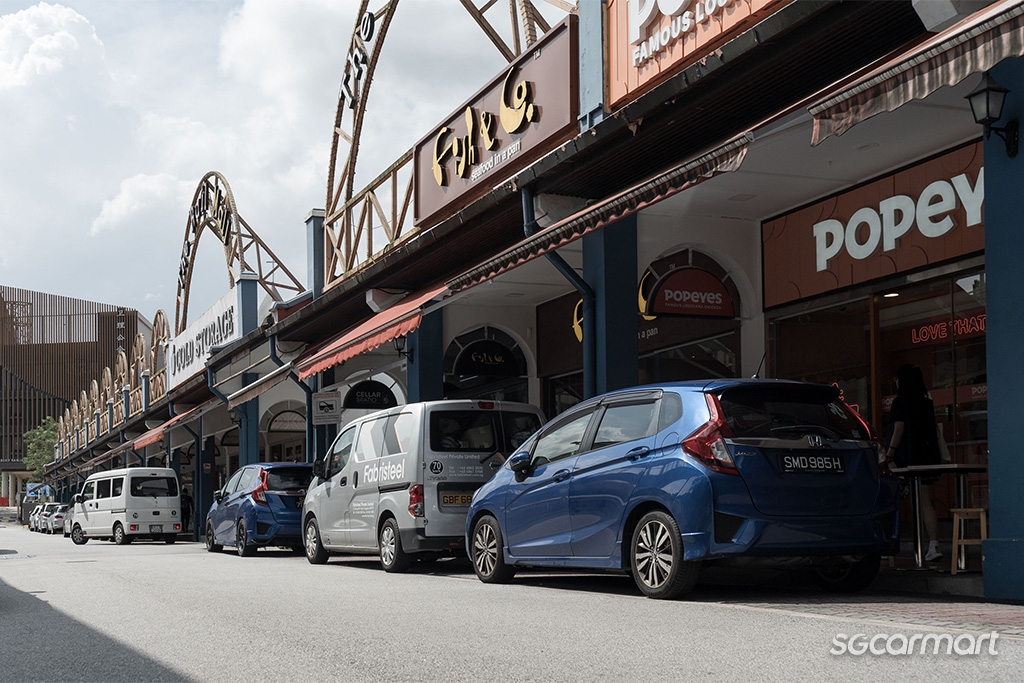Sgcarmart Explores: Bukit Batok! (Sort of...)
10 Jul 2024|3,379 views
Undecided on whether it's the East or West side that's truly best? The interminable debate may just slant in the latter's favour, should one ever decide to embark on a day adventure through one of the island's most storied areas.
Bukit Batok is probably not the first place to come to mind when you mention the West. But as the host of (bits of) a nature reserve, an old factory-cum-wartime museum, and even defunct quarries, it's arguably the go-to place if ever you desire to be momentarily transported out of modern-day Singapore.
The estate's name itself, in fact, already tells part of this story. 'Bukit', as we know, means hill, while the fact that the real origin of 'Batok' has never quite been nailed down only reveals more of its past the further down one digs.
A quick note: We normally associate Bukit Batok with just the area around the MRT station, which can be referred to as Bukit Batok Central. But take a look at Google Maps (or even HDB's own explanation), and you'll note that Bukit Batok also encompasses sub-zones such as Gui Lin and Hillview - which this day of exploration also covers.
Barring peak hours (which are out of the question if you're doing a weekend-day out here), traffic is generally light within Bukit Batok, although the winding/snaking structure of the roads might be confusing for 'non-locals' here
Word of advice: Road conditions to take note of in Bukit Batok
Like Queenstown (the previous estate we visited), Bukit Batok can be considered as one of Singapore's older estates today, with its development into a HDB town taking shape all the way back in the 1980s.
Accordingly, the area also lacks the grid-likeness of modern estates. And either way, Bukit Batok will always demand its own sort of makeup; the geographical make-up of the area, with its hills and nature reserves, means roads have to curve and snake around nature.
The result is the same: It's easy for non-residents to get lost on its small roads. On the less stressful flip side, traffic is generally quite light, and free-flowing throughout. The one stretch that newer drivers might want to take note of is Upper Bukit Timah Road, which widens out beyond just two lanes. Here, traffic moves quicker, while there is a constant stream of public buses.
1. Little Gui Lin (Bukit Batok Town Park)
The presence of Little Gui Lin can only mean that there must have been a "Big" Gui Lin that preceded it. And indeed, you might know Gui Lin to be a city located in the Northeast of China's Guangxi prefecture - among the first batch to be inducted into China's National Famous Historical and Cultural Cities by its government.
There's a good reason why this quaint little area in Bukit Batok has been given its name.
Gui Lin itself is known for its breathtaking landscape, most notably comprising its topography of dramatic limestone karst hills. In similar vein, the area known as Little Gui Lin is marked out by its granite rock formations, the sight of which immediately transports you out of Singapore.
Fun fact: This used to be a granite quarry up till the 1980s (the first of many winks at the past on our adventure today), before being converted into a park by the government. This lake isn't natural; the area was flooded in the conversion process, but the water has only helped to enhance its ethereality. It's almost as if you've walked straight into the filmset of some 1950s wu xia flick.
It might sound rather self-evident, but Little Gui Lin really isn't large. If you're coming here with more cynical personality types, you may even be prepared to hear a "Like that only ah?" or two thrown out - to which you should then passionately argue otherwise.
Its magnificence, while contained, is something to behold in person, while the juxtaposition of those rock formations against the HDB blocks residing just across the road of the small lake simply dials up the surrealness. Anyway, as we'll demonstrate, your Bukit Batok adventure doesn't have to end here...
Where to park: The cluster of flats right across the road - blocks 523, 524 and 525, share a carpark area that's just a 2-3 minute walk away.
Ease of parking: 3.5/5. It's a surface-level carpark, so there are no tight ramps to negotiate, nor inconvenience to be suffered from scaling multiple floors. The only caveat, however, is that there aren't many white lots here - which might be an issue on Sundays.
Parking rates: Normal HDB rates, at $0.60 per half-hour charged by the minute. Sundays are free here!
2. Mian Wang (1971) - Hokkien Mee with a special twist (if you so wish)
Once you've worked up a small appetite from that light stroll around the lake, a culinary gem awaits just a few blocks away. (If you must, Google Maps says that driving takes two minutes; it’s just 10 minutes by foot otherwise.)
Misstamchiak has called it "Hokkien mee with a modern spin", while Eatbook has referred to it as zhng-ed up Hokkien Mee - both of which are pretty good descriptions.
Hokkien mee, as a dish, is so unquestioned in the state we recognise it for that few venture to put any spin on it - nothing more, nothing less. But Mian Wang 1971, whose name actually refers to the year it was founded, is different.
While salted egg calamari is something you expect to see either at a Western food joint, or at a zhi char place, it's one of the many supporting actors here, laid out neatly to the side of the hokkien mee. Other less conventional alternatives include braised pork (yum), and crispy chicken cutlet (double yum). But if you prefer not to venture that far off the beaten path, more traditional options are available too, such as sambal belacan hokkien mee, seafood la-la hokkien mee, or even just your standard hokkien mee.
Speaking of this, the hokkien mee itself is tasty and balanced too, while also correctly infusing a good serving of pork lard for a decidedly decadent meal.
Where to park: If you must make the drive, there is also surface level parking surrounding BLK 537, which is where Mian Wang 1971 is located.
Ease of parking: 5/5. Again - the surface-level lots are wide, there are no tight or nasty ramps to navigate, and the lots are even more plentiful here.
Parking rates: HDB rates, free parking on Sundays - or the same as above. You know the drill.
3. Coexist Coffee
Coffee is always a good idea after lunch - even if arriving at it presents a rather harrowing affair.
We're half-joking, of course - but still, Coexist Coffee is so well nestled within Hillview's industrial estate that you might question the accuracy of Google Maps when you first arrive at a (rather hostile-looking) tower. In fact, by the time you hit the 7th floor, you won't even have reached yet - and might still be left wondering if you've wandered off course, if not for the sight of a standee reading out "Coexist Coffee Co".
Keep going - the industrial building might appear abandoned and hostile, but good coffee awaits just two flights of stairs above
Ascend the stairs, and step in, however, and you'll be greeted by a welcoming flood of natural light (on a sunny day that is) and the aroma of fresh coffee beans. Celebrating its third birthday in 2024, Coexist Coffee's space here has already undergone one refresh - but still embraces its host building's spirit with a decidedly industrial-like aesthetic too, with its bare, concrete walls and unvarnished floor.
The specialty coffee in itself is already lovely, and offers enough variety even for coffee aficionados. But apart from that, Coexist Coffee also serves cold brew tea, lighter bites - including some very well done croissants - and of course, a proper cafe menu for those who want a full meal here.
You're literally on the rooftop too, so if you want to escape the noise for a bit, you can always step out mid-meal for some air.
Where to park: There are white parallel lots along Hillview Terrace - and ostensibly also private white lots for Hillview Building itself, although our only repeat-visitor here so far told us he's always only parked outside when coming here…
Ease of parking: 3.5/5. Don't be scared by the mention of parallel lots; a large number of those here are either bunched in pairs or stand alone. And besides, you won't feel the pressure to slowly ease your way into the lot considering how ulu it is. Traffic is generally light, save for the occasional heavy vehicle.
Parking rates: $0.60 per half hour, charged by the minute either via coupons (if you still have them) or the Parking app.
4. Bukit Batok Nature Park
Before we proceed - no, this isn't the same as Bukit Batok Town Park, nor is it connected to Little Gui Lin structurally. In fact the two parks are separated by a good 1.5km of walking. (With our trusty MG 4 EV for the day, however, every commute is between only five to 10 minutes.)
What sets Bukit Batok Nature Park from many other parks in Singapore is just how dense the foliage here is. An important and interesting fact to note is that this is actually classified as a nature reserve - and a rather sizeable one too by local standards, at 36 hectares. If not for the fact that the walking paths have been well laid out in hard brick and stone, you'd really think you'd stumbled into the depths of a forest after just a few minutes in.
Provided that your fellow park-visitors are considerate, Bukit Batok Nature Park serves as a genuinely tranquil green haven; one that (once again) transports you away from the urban sprawl of Singapore. The flora and fauna here are captivating, too. On our hike we spotted squirrels, wild fungi and even a monitor lizard burrowing for food. NParks has a fuller guide on walking trails, as well as the wildlife that apparently dwells in the park, which you can view here!
Rightfully, hiking through the park to its heart should lead you to yet another quarry once you come out onto the Plaza Area - but it turned out that the footpaths were undergoing some renovation of some sorts during our visit. Oh well - at least we had Little Gui Lin…
Where to park: Bukit Batok Nature Park officially only has one carpark, whose entrance you'll find along Bukit Batok East Avenue 2.
Ease of parking: 5/5. It's a large open carpark that is unlikely to ever really fill up.
Parking rates: Again, HDB parking rates daily (including Public Holidays) - meaning $0.60 per half hour, charged by the minute. There is a nice catch, though; if you're here between 6:30am to 8:30am (again, daily), parking is free. Woohoo!
5. Former Ford Factory
More than eight decades before Made-in-Singapore Hyundai Ioniq 5s started rolling out of Jurong West, Singapore had already been christened as an auto-manufacturing nation in its own right by other carmakers - including the Ford Motor Company.
Interestingly, however, Ford didn't always occupy this site at Upper Bukit Timah Road. Instead, it moved into the art deco-style factory only in 1941 - around twenty years after it first arrived in Singapore.
Apart from manufacturing the company's own vehicles, the Former Ford Factory was also a pivotal (and sombre) site for the Japanese Occupation in Singapore
At that point, the Former Ford Factory was said to boast state-of-the-art facilities. Just a year later, however, this would become the pivotal site at which the British officially surrendered Singapore to the Japanese. Under the Japanese Occupation, Nissan trucks for the Japanese army, rather than Ford vehicles, rolled out of the factory's doors. When the War ended, assembly of Fords resumed until the doors were shuttered by Ford Malaya in June 1980.
Today, those old assembly lines have been converted into a permanent exhibition about wartime Singapore (admission for Singaporean citizens is free!). Named Surviving the Japanese Occupation: War and its Legacies, its centrepiece is the boardroom in which the surrender took place, which even retains the original chairs.
As with many other local exhibitions, it's well-curated and exhibited - comprising original artefacts, clearly illustrated timelines, and a good dose of interactive audiovisual materials - but also particularly poignant. The subject matter is heavy, but it's also important and sobering to all Singaporeans.
(Another fun fact: This isn't the entirety of the original Ford Factory; its rear portion was demolished in 1997. For what purpose, you may ask? Look no further than the condominium right behind, named The Hillside.)
Where to park: The Former Ford Factory has its own private parking lots on-site, which visitors are allowed to use; there's an entire row outside the museum, and a few more down the ramp (i.e. near the main road's entrance/exit).
Ease of parking: 5/5. While parking is limited, it's unlikely you'll ever find all the lots filled up entirely too when you’re here.
Parking rates: Free!
6. The Rail Mall
Multi-storey, glassy super-complexes have become the unquestioned template of Singaporean shopping malls. Consequently, getting lost when trying to hunt down a specific store is almost a given.
To that end, The Rail Mall - with its unfussy, single row of shops - already serves as a nice and unfussy counterpoint. Except that this particular strip mall takes things one step further: By mixing in a locomotive-theme (duh) and nostalgia.
For starters, you'll notice that the Rail Corridor - quite a different section from the one previously visited by the way - is just a stone's throw away from the entrance.
Apart from that, however, there are commissioned murals all around that help piece together various bits of the area's past, including homages to the gambier and pepper plantations of old, the last wild tiger shot in Singapore, and also the last KTM train to journey through the heart of Singapore.
The Rail Mall might not have your typical heavyweight-tenants - but again, if you wanted to feel like you were escaping Singapore, why would you want to see yet another Uniqlo or H&M? Instead, treat this as a place to end the day over North Indian cuisine, craft beer - or indeed, even prata - and you'll be well satisfied.
Where to park: Multiple parking areas present themselves for visitors. The Rail Mall does have an official gantried carpark - but if you're lucky there are also free vertical lots on both sides when you first turn into Chia Eng Say Road, and free parallel lots running alongside the mall.
Ease of parking: 3.5/5. The difficulty of parking here will depend on how picky you are - but as a general note, you shouldn't have to play an insane waiting game for a lot, nor subject your car to any horrid squeezing.
Parking rates: Free (vertical lots at entrance or mall-side parallel lots), or $1.40 per hour - charged as a block - daily (open air mall carpark)
Don't forget to check out the other parts of Singapore we've explored by car while you're here!
Sgcarmart Explores: Queenstown!
Undecided on whether it's the East or West side that's truly best? The interminable debate may just slant in the latter's favour, should one ever decide to embark on a day adventure through one of the island's most storied areas.
Bukit Batok is probably not the first place to come to mind when you mention the West. But as the host of (bits of) a nature reserve, an old factory-cum-wartime museum, and even defunct quarries, it's arguably the go-to place if ever you desire to be momentarily transported out of modern-day Singapore.
The estate's name itself, in fact, already tells part of this story. 'Bukit', as we know, means hill, while the fact that the real origin of 'Batok' has never quite been nailed down only reveals more of its past the further down one digs.
A quick note: We normally associate Bukit Batok with just the area around the MRT station, which can be referred to as Bukit Batok Central. But take a look at Google Maps (or even HDB's own explanation), and you'll note that Bukit Batok also encompasses sub-zones such as Gui Lin and Hillview - which this day of exploration also covers.
Barring peak hours (which are out of the question if you're doing a weekend-day out here), traffic is generally light within Bukit Batok, although the winding/snaking structure of the roads might be confusing for 'non-locals' here
Word of advice: Road conditions to take note of in Bukit Batok
Like Queenstown (the previous estate we visited), Bukit Batok can be considered as one of Singapore's older estates today, with its development into a HDB town taking shape all the way back in the 1980s.
Accordingly, the area also lacks the grid-likeness of modern estates. And either way, Bukit Batok will always demand its own sort of makeup; the geographical make-up of the area, with its hills and nature reserves, means roads have to curve and snake around nature.
The result is the same: It's easy for non-residents to get lost on its small roads. On the less stressful flip side, traffic is generally quite light, and free-flowing throughout. The one stretch that newer drivers might want to take note of is Upper Bukit Timah Road, which widens out beyond just two lanes. Here, traffic moves quicker, while there is a constant stream of public buses.
1. Little Gui Lin (Bukit Batok Town Park)
The presence of Little Gui Lin can only mean that there must have been a "Big" Gui Lin that preceded it. And indeed, you might know Gui Lin to be a city located in the Northeast of China's Guangxi prefecture - among the first batch to be inducted into China's National Famous Historical and Cultural Cities by its government.
There's a good reason why this quaint little area in Bukit Batok has been given its name.
Gui Lin itself is known for its breathtaking landscape, most notably comprising its topography of dramatic limestone karst hills. In similar vein, the area known as Little Gui Lin is marked out by its granite rock formations, the sight of which immediately transports you out of Singapore.
Fun fact: This used to be a granite quarry up till the 1980s (the first of many winks at the past on our adventure today), before being converted into a park by the government. This lake isn't natural; the area was flooded in the conversion process, but the water has only helped to enhance its ethereality. It's almost as if you've walked straight into the filmset of some 1950s wu xia flick.
It might sound rather self-evident, but Little Gui Lin really isn't large. If you're coming here with more cynical personality types, you may even be prepared to hear a "Like that only ah?" or two thrown out - to which you should then passionately argue otherwise.
Its magnificence, while contained, is something to behold in person, while the juxtaposition of those rock formations against the HDB blocks residing just across the road of the small lake simply dials up the surrealness. Anyway, as we'll demonstrate, your Bukit Batok adventure doesn't have to end here...
Where to park: The cluster of flats right across the road - blocks 523, 524 and 525, share a carpark area that's just a 2-3 minute walk away.
Ease of parking: 3.5/5. It's a surface-level carpark, so there are no tight ramps to negotiate, nor inconvenience to be suffered from scaling multiple floors. The only caveat, however, is that there aren't many white lots here - which might be an issue on Sundays.
Parking rates: Normal HDB rates, at $0.60 per half-hour charged by the minute. Sundays are free here!
2. Mian Wang (1971) - Hokkien Mee with a special twist (if you so wish)
Once you've worked up a small appetite from that light stroll around the lake, a culinary gem awaits just a few blocks away. (If you must, Google Maps says that driving takes two minutes; it’s just 10 minutes by foot otherwise.)
Misstamchiak has called it "Hokkien mee with a modern spin", while Eatbook has referred to it as zhng-ed up Hokkien Mee - both of which are pretty good descriptions.
Hokkien mee, as a dish, is so unquestioned in the state we recognise it for that few venture to put any spin on it - nothing more, nothing less. But Mian Wang 1971, whose name actually refers to the year it was founded, is different.
While salted egg calamari is something you expect to see either at a Western food joint, or at a zhi char place, it's one of the many supporting actors here, laid out neatly to the side of the hokkien mee. Other less conventional alternatives include braised pork (yum), and crispy chicken cutlet (double yum). But if you prefer not to venture that far off the beaten path, more traditional options are available too, such as sambal belacan hokkien mee, seafood la-la hokkien mee, or even just your standard hokkien mee.
Speaking of this, the hokkien mee itself is tasty and balanced too, while also correctly infusing a good serving of pork lard for a decidedly decadent meal.
Where to park: If you must make the drive, there is also surface level parking surrounding BLK 537, which is where Mian Wang 1971 is located.
Ease of parking: 5/5. Again - the surface-level lots are wide, there are no tight or nasty ramps to navigate, and the lots are even more plentiful here.
Parking rates: HDB rates, free parking on Sundays - or the same as above. You know the drill.
3. Coexist Coffee
Coffee is always a good idea after lunch - even if arriving at it presents a rather harrowing affair.
We're half-joking, of course - but still, Coexist Coffee is so well nestled within Hillview's industrial estate that you might question the accuracy of Google Maps when you first arrive at a (rather hostile-looking) tower. In fact, by the time you hit the 7th floor, you won't even have reached yet - and might still be left wondering if you've wandered off course, if not for the sight of a standee reading out "Coexist Coffee Co".
Keep going - the industrial building might appear abandoned and hostile, but good coffee awaits just two flights of stairs above
Ascend the stairs, and step in, however, and you'll be greeted by a welcoming flood of natural light (on a sunny day that is) and the aroma of fresh coffee beans. Celebrating its third birthday in 2024, Coexist Coffee's space here has already undergone one refresh - but still embraces its host building's spirit with a decidedly industrial-like aesthetic too, with its bare, concrete walls and unvarnished floor.
The specialty coffee in itself is already lovely, and offers enough variety even for coffee aficionados. But apart from that, Coexist Coffee also serves cold brew tea, lighter bites - including some very well done croissants - and of course, a proper cafe menu for those who want a full meal here.
You're literally on the rooftop too, so if you want to escape the noise for a bit, you can always step out mid-meal for some air.
Where to park: There are white parallel lots along Hillview Terrace - and ostensibly also private white lots for Hillview Building itself, although our only repeat-visitor here so far told us he's always only parked outside when coming here…
Ease of parking: 3.5/5. Don't be scared by the mention of parallel lots; a large number of those here are either bunched in pairs or stand alone. And besides, you won't feel the pressure to slowly ease your way into the lot considering how ulu it is. Traffic is generally light, save for the occasional heavy vehicle.
Parking rates: $0.60 per half hour, charged by the minute either via coupons (if you still have them) or the Parking app.
4. Bukit Batok Nature Park
Before we proceed - no, this isn't the same as Bukit Batok Town Park, nor is it connected to Little Gui Lin structurally. In fact the two parks are separated by a good 1.5km of walking. (With our trusty MG 4 EV for the day, however, every commute is between only five to 10 minutes.)
What sets Bukit Batok Nature Park from many other parks in Singapore is just how dense the foliage here is. An important and interesting fact to note is that this is actually classified as a nature reserve - and a rather sizeable one too by local standards, at 36 hectares. If not for the fact that the walking paths have been well laid out in hard brick and stone, you'd really think you'd stumbled into the depths of a forest after just a few minutes in.
Provided that your fellow park-visitors are considerate, Bukit Batok Nature Park serves as a genuinely tranquil green haven; one that (once again) transports you away from the urban sprawl of Singapore. The flora and fauna here are captivating, too. On our hike we spotted squirrels, wild fungi and even a monitor lizard burrowing for food. NParks has a fuller guide on walking trails, as well as the wildlife that apparently dwells in the park, which you can view here!
Rightfully, hiking through the park to its heart should lead you to yet another quarry once you come out onto the Plaza Area - but it turned out that the footpaths were undergoing some renovation of some sorts during our visit. Oh well - at least we had Little Gui Lin…
Where to park: Bukit Batok Nature Park officially only has one carpark, whose entrance you'll find along Bukit Batok East Avenue 2.
Ease of parking: 5/5. It's a large open carpark that is unlikely to ever really fill up.
Parking rates: Again, HDB parking rates daily (including Public Holidays) - meaning $0.60 per half hour, charged by the minute. There is a nice catch, though; if you're here between 6:30am to 8:30am (again, daily), parking is free. Woohoo!
5. Former Ford Factory
More than eight decades before Made-in-Singapore Hyundai Ioniq 5s started rolling out of Jurong West, Singapore had already been christened as an auto-manufacturing nation in its own right by other carmakers - including the Ford Motor Company.
Interestingly, however, Ford didn't always occupy this site at Upper Bukit Timah Road. Instead, it moved into the art deco-style factory only in 1941 - around twenty years after it first arrived in Singapore.
Apart from manufacturing the company's own vehicles, the Former Ford Factory was also a pivotal (and sombre) site for the Japanese Occupation in Singapore
At that point, the Former Ford Factory was said to boast state-of-the-art facilities. Just a year later, however, this would become the pivotal site at which the British officially surrendered Singapore to the Japanese. Under the Japanese Occupation, Nissan trucks for the Japanese army, rather than Ford vehicles, rolled out of the factory's doors. When the War ended, assembly of Fords resumed until the doors were shuttered by Ford Malaya in June 1980.
Today, those old assembly lines have been converted into a permanent exhibition about wartime Singapore (admission for Singaporean citizens is free!). Named Surviving the Japanese Occupation: War and its Legacies, its centrepiece is the boardroom in which the surrender took place, which even retains the original chairs.
As with many other local exhibitions, it's well-curated and exhibited - comprising original artefacts, clearly illustrated timelines, and a good dose of interactive audiovisual materials - but also particularly poignant. The subject matter is heavy, but it's also important and sobering to all Singaporeans.
(Another fun fact: This isn't the entirety of the original Ford Factory; its rear portion was demolished in 1997. For what purpose, you may ask? Look no further than the condominium right behind, named The Hillside.)
Where to park: The Former Ford Factory has its own private parking lots on-site, which visitors are allowed to use; there's an entire row outside the museum, and a few more down the ramp (i.e. near the main road's entrance/exit).
Ease of parking: 5/5. While parking is limited, it's unlikely you'll ever find all the lots filled up entirely too when you’re here.
Parking rates: Free!
6. The Rail Mall
Multi-storey, glassy super-complexes have become the unquestioned template of Singaporean shopping malls. Consequently, getting lost when trying to hunt down a specific store is almost a given.
To that end, The Rail Mall - with its unfussy, single row of shops - already serves as a nice and unfussy counterpoint. Except that this particular strip mall takes things one step further: By mixing in a locomotive-theme (duh) and nostalgia.
For starters, you'll notice that the Rail Corridor - quite a different section from the one previously visited by the way - is just a stone's throw away from the entrance.
Apart from that, however, there are commissioned murals all around that help piece together various bits of the area's past, including homages to the gambier and pepper plantations of old, the last wild tiger shot in Singapore, and also the last KTM train to journey through the heart of Singapore.
The Rail Mall might not have your typical heavyweight-tenants - but again, if you wanted to feel like you were escaping Singapore, why would you want to see yet another Uniqlo or H&M? Instead, treat this as a place to end the day over North Indian cuisine, craft beer - or indeed, even prata - and you'll be well satisfied.
Where to park: Multiple parking areas present themselves for visitors. The Rail Mall does have an official gantried carpark - but if you're lucky there are also free vertical lots on both sides when you first turn into Chia Eng Say Road, and free parallel lots running alongside the mall.
Ease of parking: 3.5/5. The difficulty of parking here will depend on how picky you are - but as a general note, you shouldn't have to play an insane waiting game for a lot, nor subject your car to any horrid squeezing.
Parking rates: Free (vertical lots at entrance or mall-side parallel lots), or $1.40 per hour - charged as a block - daily (open air mall carpark)
Don't forget to check out the other parts of Singapore we've explored by car while you're here!
Sgcarmart Explores: Queenstown!
Thank You For Your Subscription.












































